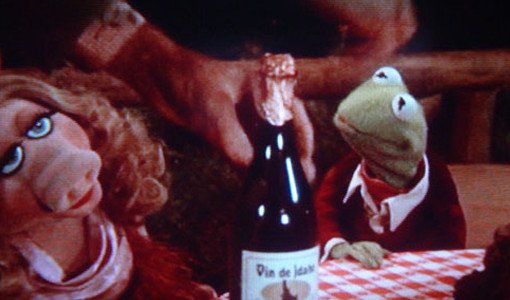
Like we’ve told you before, having a few go-to wine facts in the chamber can come in handy at restaurants, dinner parties, and conversations with people who insist on yapping about wine. But knowing how to talk about wine and knowing what wine you actually like to drink aren’t the same thing. About 2,000 different kinds of grapes are used to produce tens of thousands of different wines from all over the world, so it’s easy to feel lost when you’re staring dumbly at all the bottles in the liquor store wine aisle or on the restaurant wine list.
To make it all a little easier, we’ve put together a quick reference guide with the help of Fred Cabrera, wine director at Red the Steakhouse in Miami. We start out with some basic wine vocabulary, but keep one thing in mind — there’s no “right” way to describe the way a wine tastes to you. So while these words may help you understand how other people describe wine, you don’t necessarily need to use them to describe it yourself. (Though using the phrase “mad bitchin'” is generally discouraged.)
Appellation: Where the grapes are grown and where the wine is produced
Reserve: It’s one of the winemaker’s best products, i.e., it’s probably pricy.
Vintage: The year or place the wine is bottled
Acidity: The tartness of the wine
Crisp: It’s super tart
Soft: It’s not super tart
Body: How heavy the wine feels when you taste it
Big: A hippo made of wine is sloshing around inside your mouth.
Light/Feathery: A leprechaun made of wine is doing a jig on your tongue.
Medium: A default answer if you have no idea if a wine is big or light/feathery.
Jammy: The wine is fruity.
Legs: The film on the side of a wine glass after you swirl the wine around; also called tears of wine.
Finish: The aftertaste
 REDS
REDS
Cabernet Sauvignon
Cabs are one of the most popular wine grape varietals … and yes, calling them cabs is okay. “Cabernets are always fuller bodied and are mostly going to have a lot of dark cherry, black currant, and other red fruit flavors,” Cabrera says.
Delicious example: Groth Cabernet Sauvignon ($50 and up)
Merlot
The main character in the epicly overrated Sideways hated merlots, but there really isn’t anything wrong with them. “They usually have more of a blue-fruit note to them, like blueberries. They tend to be a little bit softer and go great with steak; you can even pair them with heavier fish.”
Delicious example: Duckhorn Merlot ($23 and up)
Zinfandel
Despite what you may think, zinfandels aren’t just for girls … anymore. “Our red zins are really popular with everyone these days, and they pair great with spicier foods and barbecue. Body-wise, they’re not as big as cabs, but they’re jammy. They almost taste like stewed berries.”
Delicious example: Orin Swift Saldo ($28)
Pinot Noir
“Pinots can be very lean-bodied and jammy, and they also have a high acidity to them. They usually have some strawberry notes; some have raspberry. For people new to wines or new to red wines, they’re a stepping stone to more serious wines.”
Delicious example: Belle Glos ($18 and up).
Cabernet Franc
“These have a tobacco aroma.” That’s tastier than it sounds.
Delicious example: Jarvis Cabernet Franc ($50 and up)
Syrah/Shiraz
“They’re jammy, but also very dark and dense, and contain lots of spiciness. Most of the time they’re really heavy and fuller bodied than cabs, and can be big, bold, and powerful.”
Delicious example: Two Hands Gnarly Dudes ($33)
Malbec
“Malbecs are hot wines now. They usually have the same body as Merlot — medium to full-bodied. Flavor-wise, you have some plum and blackberry in there. Again, very jammy.” Malbecs pair well with heavier meats like sausage or steak. (And yes, we also have trouble getting past the frequent use of the word “jammy.”)
Delicious example: Bodega NQN 2006 ($23)



